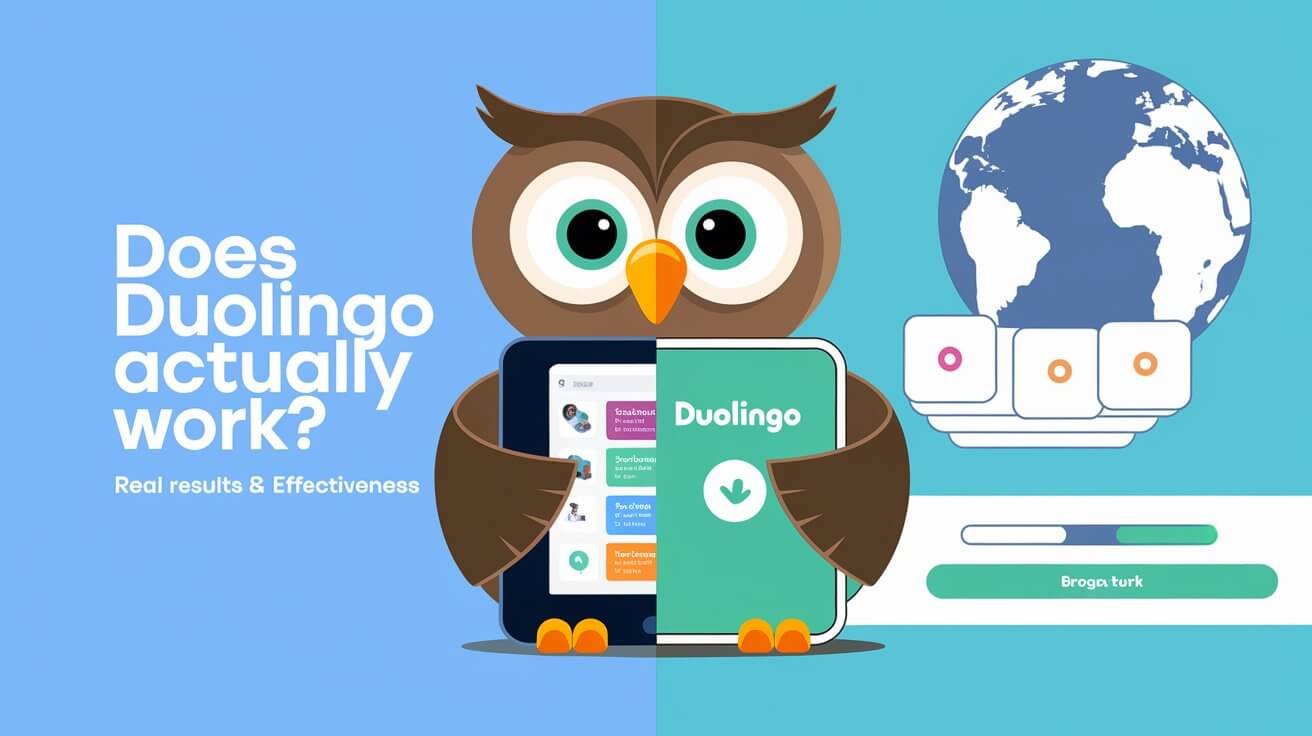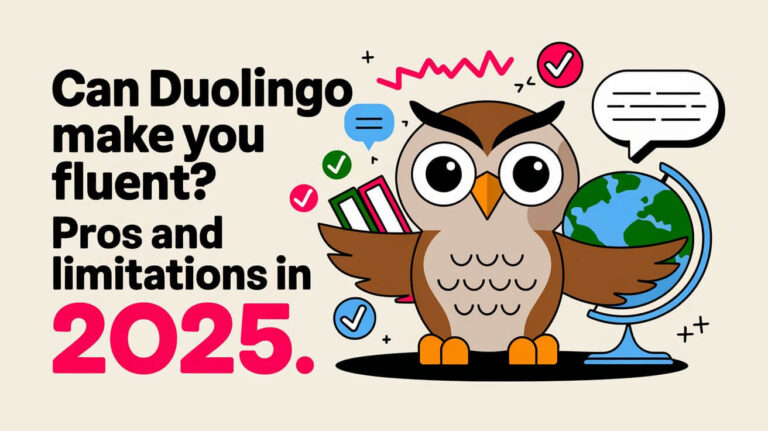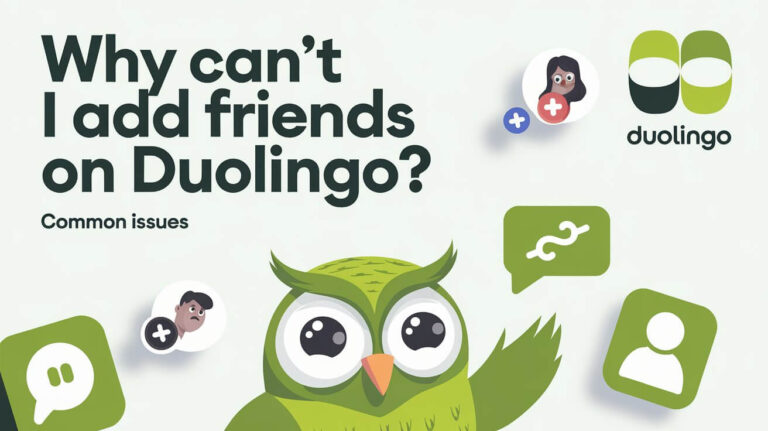In today’s digital world, learning languages has changed a lot. Apps like Duolingo are at the forefront, making it fun. Duolingo turns learning into a game, with a cool design.
It’s great for anyone who wants to learn a new language. You can do different activities like translating words and listening to audio. You even get virtual money called “lingots” to help you move forward.
But, does Duolingo really work? Some people say it helps a lot, while others think it’s not enough for true fluency.
The Science Behind Duolingo’s Learning Method
Duolingo uses science to make learning languages fun. It has many ways to keep users interested and learning well.
Gamification Elements in Language Learning
Duolingo’s lessons are interactive, starting learners on their language journey right away. They focus on the most important skills and use AI to help users learn at their own speed. This way, everyone can learn based on their own pace and abilities.
The app uses points, levels, and rewards to keep users excited about learning. It makes learning fun and memorable by using joyful experiences and light-hearted lessons.
Daily Streak System and Motivation
Duolingo’s streak system keeps users practicing every day. By rewarding them for daily lessons, it helps keep the motivation up. This system helps make learning a new language a regular habit.
Spaced Repetition Technology
Duolingo’s algorithm uses spaced repetition to help users remember what they’ve learned. It makes users review their skills over time. This method is known to improve long-term memory of language skills.
| Feature | Description |
|---|---|
| Personalized Learning | Duolingo’s AI-powered system adapts the learning experience to each user’s individual needs and progress. |
| Gamification Elements | Points, levels, rewards, and a competitive environment encourage engagement and motivation. |
| Spaced Repetition | The app’s algorithm helps reinforce learning over time by gradually decaying skills, prompting users to review and strengthen their knowledge. |
While Duolingo’s methods work for many, they might not suit everyone. Some might find the constant need to practice and review skills too much. It’s key to find a learning method that fits your own learning style and goals.
Does Duolingo Actually Work: Research-Based Evidence
Research on Duolingo shows mixed results. It can help with basic vocabulary and grammar. But, it might not be enough for true fluency.
The app excels in teaching writing systems and simple phrases. This is especially true for languages like Japanese or Russian.
However, Duolingo falls short in improving conversational skills. It works best when combined with other learning methods. This includes classroom lessons or real-life experiences.
A study on university students learning Spanish with Duolingo found big improvements. They saw gains in reading, writing, listening, and speaking after three months.
Another study showed beginners could hit 90% accuracy in short conversations after 4-6 weeks. This was with the app’s help.
Interestingly, Duolingo users who reached the A2 level in English scored higher on tests. They did better in reading and listening than expected.
Users of French and Spanish who finished five Duolingo sections knew as much as university students. These students had taken five semesters of classes.
Duolingo is a useful tool for learning vocabulary and basic grammar. But, it should be used with other methods for full language proficiency.
Core Features of Duolingo’s Platform
Duolingo is a popular app for learning languages. It offers many features to make learning fun and easy. The app has a skill tree that helps users learn step by step.
Skill Tree Structure
The skill tree in Duolingo shows how to learn a language. Users go through lessons, unlocking new skills. This helps them see their progress and know what to work on.
Practice Modes and Exercise Types
Duolingo has many ways to practice languages. It includes quizzes, listening, speaking, and translation exercises. This variety keeps learners interested and helps them become proficient.
Progress Tracking Systems
Duolingo lets users track their progress. They can see how far they’ve come and set goals. The app also gives feedback to help users improve.
Even though Duolingo is great, some users find some translations odd. But, its fun approach and variety of exercises keep many people coming back. It’s a top choice for learning languages easily and effectively.
Limitations of App-Based Language Learning
App-based language tools like Duolingo are very popular. Yet, they have their downsides. They might not give the full picture needed for true language skills.
One big problem is the speech recognition software. It’s not always right, which can mess up how well you speak. This can make it hard to talk like a native speaker in real life.
Apps also focus too much on games and short lessons. This might not prepare you for real-life language use. It can make you think you’re getting better, even if you’re not.
To get better, you might need more than just an app. You might need to take classes or practice with native speakers. This helps you understand more than just words and grammar.
| App-Based Language Learning | Traditional Language Classes |
|---|---|
| Gamification and short lessons | Structured curriculum and in-depth instruction |
| Unreliable speech recognition | Personalized feedback and pronunciation guidance |
| Limited contextual learning | Immersion in language and culture |
| Potential for false sense of progress | Consistent feedback and goal-setting |
Apps can be helpful for learning a language. But, it’s key to know their limits. You should look for other ways to improve your language skills.
Real Success Stories and User Experiences
Reviews of duolingo show a wide range of experiences. Some learners see big improvements, especially at the start. But, others say it’s hard to keep learning and get really good at a language with just duolingo for beginners.
Beginner to Intermediate Progress
A diplomat learned Dutch with Duolingo in just 10 months. They got good enough to talk like a local. This shows Duolingo can really help, especially for beginners.
Long-term Language Retention
But, getting really fluent is harder. Duolingo helps build a strong base, but keeping it up is tough. Watching news or reading books in the target language helps a lot.
“Duolingo has been an essential tool in my language learning journey, helping me make significant progress in a short amount of time. But I’ve found that combining it with other resources is key to maintaining and advancing my skills over the long run.”
– Corniesha Johnson, Duolingo user from Houston
| User | Language | Duration | Progress |
|---|---|---|---|
| Tommy Thompson | Spanish | 3.5 years | Achieved conversational fluency to connect with Spanish-speaking teammates and coaches |
| Jennifer Tsan | French | 5 weeks | Completed the French course on Duolingo after studying for over 5 hours per day, motivated by a trip to Montreal |
| Janet Randolph | French | 2.5 years | Emphasized consistency and routine, spending an hour each morning and maintaining a nearly 900-day study streak |
Comparing Duolingo to Traditional Language Classes
Duolingo is the top language learning app worldwide. It offers flexibility, accessibility, and is affordable. This makes it a favorite for many. But, it’s important to know the differences between Duolingo and traditional classes to see which fits your needs better.
Duolingo is great for learning basic words and grammar. It uses fun games and short lessons. This makes learning a language fun and effective. Plus, you can learn anywhere, anytime, thanks to mobile devices.
Traditional classes, on the other hand, offer a deeper learning experience. They cover more complex language topics and cultural aspects. You also get to practice speaking and listening with others in class.
Duolingo’s game-like approach can really motivate some learners. But, it might not help with all language skills as much as real-life conversations or classroom learning. Some users also miss detailed grammar explanations in Duolingo.
Choosing between Duolingo and traditional classes depends on your learning style and goals. Duolingo is great for those who are on a budget, short on time, or can’t find in-person classes. But, if you want a more detailed and structured learning experience, traditional classes might be better.
Duolingo’s Effectiveness for Different Language Skills
Duolingo is a top app for learning languages. It shines in reading and writing, especially for languages with special writing systems. The app helps build vocabulary and teaches grammar step by step. But, it might not be as good for speaking and listening skills.
Reading and Writing Proficiency
Duolingo’s plan and practice make reading and writing better. It has exercises for reading and writing that are key for literacy. This is great for those wanting to get better at written language, like in Mandarin, Japanese, or Arabic.
Speaking and Listening Development
Duolingo has speaking exercises, but they might not get you ready for real talks. The app focuses on words and rules, which can make speaking and listening skills less natural. Some say Duolingo is a good start, but you need more to get really good at speaking and listening.
Grammar and Vocabulary Building
Duolingo is great at teaching grammar and vocabulary. It teaches grammar slowly and uses many practice exercises. Its big vocabulary lessons and “spaced repetition” help you remember and learn more words. This makes Duolingo perfect for learning a language’s structure and growing your vocabulary.
Duolingo is good at some language skills but not all. It’s best for reading, writing, grammar, and vocabulary. While it’s not everything you need, it’s a great tool. It works best when used with other learning tools and real-life practice.
Best Practices for Using Duolingo Effectively
To get the most out of Duolingo, follow some key steps. Make sure to practice every day, even if it’s just for a few minutes. This helps you learn a language steadily.
Using Duolingo with other learning methods, like watching news or reading books, boosts your skills. It makes you more proficient in the language.
It’s important to set achievable goals and not worry too much about being perfect. This keeps you motivated on your duolingo effectiveness path. Also, join Duolingo’s community and forums. They offer support and chances to practice with others who love language learning apps.
Think of Duolingo as a tool to help you learn, not the only way to become fluent. By following these tips, you can use Duolingo to its fullest. This way, you’ll make steady progress in learning a new language.







